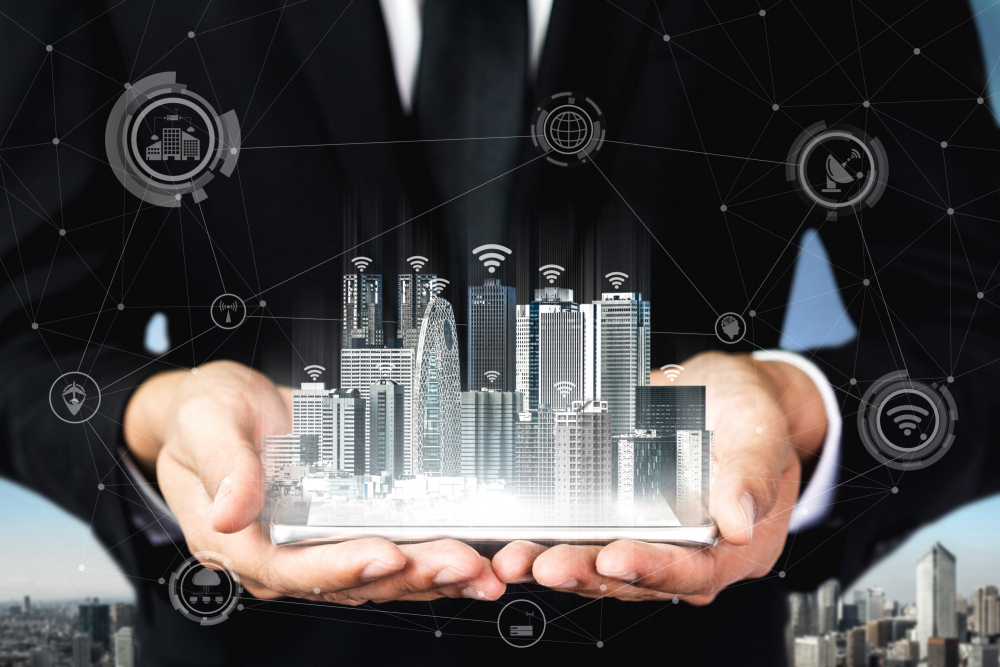Accelerating Smart Building Integration: A Guide for CIOs and CTOs to Lead the Transformation

As CIOs (Chief Information Officers) and CTOs (Chief Technology Officers) face the ever-evolving challenges of digital transformation, the push toward smart buildings has emerged as a defining opportunity—and challenge. Smart buildings go beyond traditional infrastructure, integrating IoT, AI, and automation to create environments that are efficient, sustainable, and tenant-centric.
However, achieving true smart building integration requires a deep understanding of technology architecture, deployment strategies, and stakeholder alignment. This blog outlines a roadmap tailored for CIOs and CTOs to not only navigate but lead the smart building revolution, solving integration bottlenecks and delivering measurable ROI.
1. Technology Fragmentation
Many smart building solutions operate in silos, leading to integration challenges across HVAC systems, lighting, and security.
2. Data Overload
Smart buildings generate vast amounts of data, making it difficult to extract actionable insights without robust analytics frameworks.
3. Cybersecurity Risks
IoT devices in smart buildings are prime targets for cyberattacks, requiring CIOs to implement stringent security protocols.
4. ROI Justification
Convincing stakeholders of the long-term ROI of smart building investments is often a hurdle, especially when upfront costs are high.
5. Vendor Proliferation
The plethora of smart building vendors and technologies complicates decision-making and system interoperability.
1. Unified Building Management Systems (BMS)
Modern BMS platforms integrate IoT devices, data analytics, and automation, providing a single interface for managing building operations.
Example: Siemens Desigo CC offers unified control over lighting, HVAC, and energy systems, optimizing efficiency.
2. IoT and Edge Computing
IoT sensors collect real-time data, while edge computing processes this data locally to reduce latency and improve decision-making.
Example: A New York office building used IoT-enabled HVAC systems, cutting energy costs by 25% through real-time temperature adjustments.
3. AI-Powered Insights
AI algorithms analyze building data to predict maintenance needs, optimize energy consumption, and enhance tenant experiences.
Example: Johnson Controls OpenBlue leverages AI to forecast energy demand, achieving a 30% reduction in energy consumption.
4. Digital Twins for Simulation
Digital twins replicate physical buildings in virtual environments, enabling simulations for design optimization and predictive maintenance.
Example: A mixed-use development in London used digital twins to simulate tenant traffic, reducing operational bottlenecks by 40%.
5. Cybersecurity Solutions
CIOs can adopt IoT-specific cybersecurity solutions like Darktrace to monitor and mitigate threats in real-time.
Energy Efficiency: Reduction in energy costs per square foot.
Operational Uptime: Increase in equipment availability through predictive maintenance.
Tenant Satisfaction: Improved tenant retention and net promoter scores (NPS).
Sustainability: Achievement of certifications like LEED or BREEAM.
In Singapore, the CTO of a large commercial property firm faced skyrocketing energy bills and declining tenant retention. They implemented the following:
IoT Sensors to monitor energy use in real time.
AI Analytics to predict and prevent equipment failures.
Tenant Experience Apps to enhance communication and service requests.
Results:
Energy costs reduced by 30%.
Tenant retention increased by 15%.
The building achieved a Green Mark Platinum Certification, attracting eco-conscious tenants.
Achieving seamless smart building integration demands a unified approach that combines technological expertise, real-time monitoring, and proactive maintenance. This is where the AiDOOS Virtual Delivery Center (VDC) becomes a game-changer for CIOs and CTOs.
Centralized Smart Building Management:
Oversee IoT-enabled devices, HVAC systems, lighting controls, and energy monitoring through a single, integrated platform.
AI-Powered Insights and Predictive Maintenance:
Access a team of AI specialists to implement predictive analytics, ensuring potential issues are identified and resolved before they escalate.
Digital Twin Integration:
Collaborate with experts to build and deploy digital twins, simulating real-world building conditions to optimize operations and reduce downtime.
Cybersecurity Enhancements:
Strengthen your IoT ecosystem with top-tier cybersecurity measures, ensuring your smart building infrastructure remains secure against modern threats.
Scalable Talent Access:
Tap into a global pool of tech talent for on-demand support, from IoT deployment to analytics and system upgrades, without needing permanent hires.
CIOs/CTOs: Ensure smooth integration of complex smart building systems and guarantee secure, efficient data flows.
COOs: Gain real-time visibility into building operations, optimizing efficiency and uptime.
CEOs: Enhance profitability by reducing operational costs, attracting tenants with smart building capabilities, and achieving sustainability goals.
20-30% Reduction in Operational Costs: Optimize energy usage and eliminate inefficiencies.
50% Faster Smart Building Deployments: Achieve seamless integration across systems.
Enhanced Tenant Satisfaction: Improve experiences through personalized, data-driven insights and proactive maintenance.
Achieve Sustainability Certifications: Meet LEED, BREEAM, or other green building standards effortlessly.
For CIOs and CTOs, smart building integration isn’t just about technology—it’s about leadership, vision, and execution. By embracing tools like IoT, AI, digital twins, and Virtual Delivery Centers, you can drive transformation, enhance operational efficiency, and create sustainable environments that stand the test of time.
The road to smart building success is paved with innovation and strategy. With the right tools and a clear roadmap, CIOs and CTOs can lead the charge, delivering smarter, greener, and more connected spaces for the future.